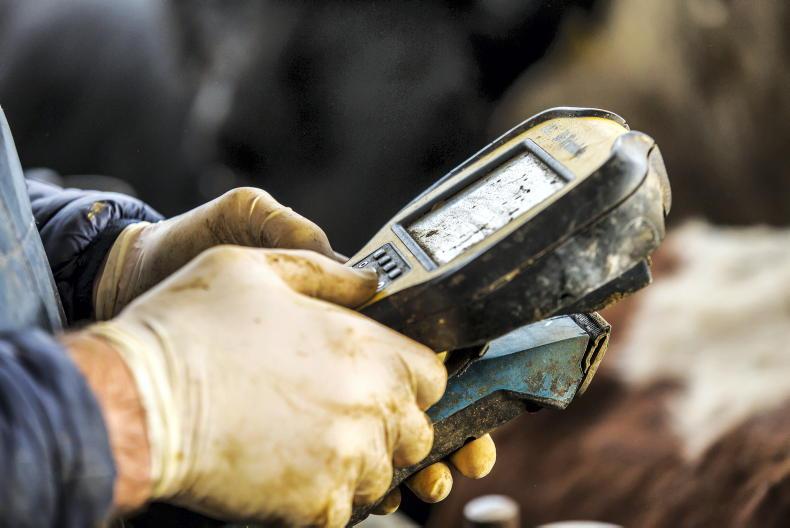The country could be split into different TB risk areas which face differing cattle movement and TB testing requirements, if the opinion of the Department of Agriculture’s TB scientific working group is taken on board.
The group has given the opinion that the State’s TB eradication programme should pursue a regional approach.
This could see TB control and surveillance measures differing between lower and higher risk areas.
The group stated that a regional approach would provide “forward momentum” for reining in the disease nationally.
It maintains that achieving TB freedom in a particular area would show “compelling evidence” that the disease can be wiped out nationally, with the “experience gained and the confidence generated” paving the way towards national eradication.
In recent years, all countries which have made progress towards or achieved TB freedom have pursued a regional approach to the disease, the group claims.
The opinion states that a “long-term commitment” would be needed for eradication measures to remain in place in the selected area to safeguard progress.
A key element to achieving freedom from infection at regional-level relates to the movement of cattle and machinery between farms and between regions of differing risk status.
Farmers in an area selected for a regional freedom approach would have to agree to additional cattle movement controls to prevent the inward movement of TB, which would “undoubtedly impact” the cattle trade.
Those with land split by TB risk boundaries could be hit by a “significant impact” on their farms, which would be greatest on fragmented farms, the group stated.
Department request
The opinion came on the back of a Department request for the group to look at the potential of regionalising the programme.
The Department noted that while significant progress has been made in reducing TBs herd incidence over the past 70 years, this progress has flatlined from 2015 and reactor numbers have been on the rise.
“In view of the lack of progress in recent years, new approaches need to be considered in relation to the eradication of [bovine] TB,” this request stated.
TB test requirements
The Department also noted that EU regulations allow for herd TB test requirements to be relaxed to once every two years when the herd incidence of a particular disease zone is 1% or less.
It also provides for one or more counties to receive TB freedom if 99.8% of herds have been free of TB for three years and other conditions before the entire country is in the position to receive freedom.
While the herd incidence level nationally currently sits at 4.7%, some counties – most located in the west – show herd incidence rates well below average.
These include Mayo at 1.8%, Galway at 2.4% and Leitrim at 2.8%, with the Department stating that lower incidence counties could potentially be a “target for achieving disease freedom”.
Read more
TB herd incidence continues to climb
TB control measures not denting disease in many hotspots
The country could be split into different TB risk areas which face differing cattle movement and TB testing requirements, if the opinion of the Department of Agriculture’s TB scientific working group is taken on board.
The group has given the opinion that the State’s TB eradication programme should pursue a regional approach.
This could see TB control and surveillance measures differing between lower and higher risk areas.
The group stated that a regional approach would provide “forward momentum” for reining in the disease nationally.
It maintains that achieving TB freedom in a particular area would show “compelling evidence” that the disease can be wiped out nationally, with the “experience gained and the confidence generated” paving the way towards national eradication.
In recent years, all countries which have made progress towards or achieved TB freedom have pursued a regional approach to the disease, the group claims.
The opinion states that a “long-term commitment” would be needed for eradication measures to remain in place in the selected area to safeguard progress.
A key element to achieving freedom from infection at regional-level relates to the movement of cattle and machinery between farms and between regions of differing risk status.
Farmers in an area selected for a regional freedom approach would have to agree to additional cattle movement controls to prevent the inward movement of TB, which would “undoubtedly impact” the cattle trade.
Those with land split by TB risk boundaries could be hit by a “significant impact” on their farms, which would be greatest on fragmented farms, the group stated.
Department request
The opinion came on the back of a Department request for the group to look at the potential of regionalising the programme.
The Department noted that while significant progress has been made in reducing TBs herd incidence over the past 70 years, this progress has flatlined from 2015 and reactor numbers have been on the rise.
“In view of the lack of progress in recent years, new approaches need to be considered in relation to the eradication of [bovine] TB,” this request stated.
TB test requirements
The Department also noted that EU regulations allow for herd TB test requirements to be relaxed to once every two years when the herd incidence of a particular disease zone is 1% or less.
It also provides for one or more counties to receive TB freedom if 99.8% of herds have been free of TB for three years and other conditions before the entire country is in the position to receive freedom.
While the herd incidence level nationally currently sits at 4.7%, some counties – most located in the west – show herd incidence rates well below average.
These include Mayo at 1.8%, Galway at 2.4% and Leitrim at 2.8%, with the Department stating that lower incidence counties could potentially be a “target for achieving disease freedom”.
Read more
TB herd incidence continues to climb
TB control measures not denting disease in many hotspots






 This is a subscriber-only article
This is a subscriber-only article










SHARING OPTIONS: